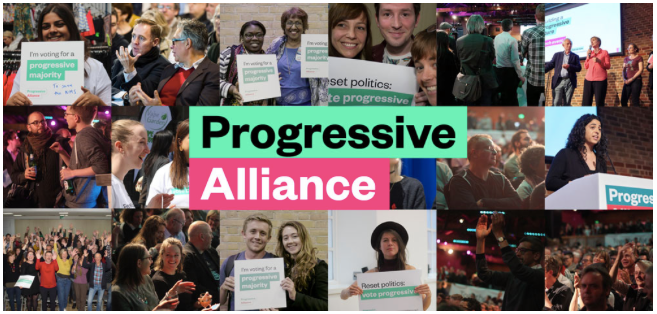So, what do you do when local elections come around and you can pretty much predict the outcome? As we know, the electoral system works against smaller parties and to the great disadvantage of fairness across the community.
Last May, in our locality, Woodbridge in deepest Suffolk and its immediate surroundings, we achieved something small but quite remarkable. What is more it is quite replicable.

The tale begins
…but some years earlier. Across three local wards and one large town council area, the Labour, Liberal Democrats and Green parties had a good and productive relationship. Why would they not? They have far more in common than in differences? Local housing, education, transport, environment, healthcare, social care….the list goes on.
There was already mutual support among these parties. The Liberal Democrats spearheaded a major million pound local initiative for young people and Labour provided the lead on a fund raising event to give support to the project. Labour ran an informal youth forum where youngsters could meet and discuss their fears and anxieties about our society, country and the world. Greens and Liberal Democrats were contributory leaders at these sessions. Labour ran street campaigns on environmental issues with the Green Party providing much of the background input and with everyone on the same page. The three parties ran joint ‘surgeries’ in local wards to hear directly from the people they represented.
A strategy is hatched
Given that we already talked, campaigned and had the occasional drink together it was not a big leap for someone to call all three branch chairs and vice-chairs together for a meeting 6 months before the local elections.
Analysis of previous local district and town ward results showed quite clearly what was happening. Labour, Lib Dems and Greens always worked in isolation and each party put up as many candidates as there were seats. The Conservatives never put up more candidates than there were seats. The result was that in one seat wards, there would be one Conservative candidate and three ‘non-Conservative’ candidates. In three seat wards there would be three Conservative candidates and as many as 9 non-Conservatives. The net result was that Conservative voters used their votes efficiently and non-Conservative voters split theirs multiple ways. The outcome was district and town councils that were heavily dominated by Conservatives, very often on as little as 40 per cent of the vote. The unfairness to the electorate was manifest.
What to do?
Bearing in mind what Einstein said, “The definition of insanity is doing the same thing over and over again and expecting different results”, we decided it was time for an outbreak of sanity. An overarching aim was agreed:
- To make the balance of the town council and local district seats more representative of the votes across the areas.
To do this we agreed:
- To target three district wards and one town council (the third largest in the district)
- Enter only the same number of non-Conservative candidates as there were seats in any ward
- ‘Play to strengths’ in selecting candidates for specific wards
- Promote the approach as what it was – offering broader, fairer and more representative councils
- Not to attack one another on the stump but highlight the successes of joint working.
OK…so what happened?
At district level across our three target wards, the 5 seats all held by Conservatives are now held by 2 Conservatives, 2 Liberal Democrats and one Green – reflecting much better the voting percentages.
At town council level, a 16 seat council, which had been 11 Conservatives and 5 non-Conservatives completely inverted to 11 non-Conservatives (3 Lab, 4 Gr, 4 LD) 4 Conservatives and one independent. Again, the true winners were the local people as votes cast almost exactly mirrored party seats.
What did the voters think?
Conversations on a range of local social platforms showed that voters clearly understood what was going on. But more notable was the turnout. Of the three district wards, one had the second highest turnout, one the third and one was average (out of 53 wards). Voters seemed much more persuaded to vote!
What next?
Analysis of all 53 district wards showed that if the same approach (of not putting up more non-Conservative candidates than there are seats in the ward) had been adopted across the whole district, there was every possibility of a mega true blue Tory flagship district council – the largest in the country – being in no overall control with an alliance of Labour, Lib Dems and Greens commanding a substantial majority. This again would have much more closely reflected the votes cast.
Furthermore, analysis of votes casts in the last set of county council elections shows that such an approach could also turn a strongly Conservative shire county council into NOC. This would much more closely reflect the numbers of votes cast for each party.
So…maybe, May 2020 is the time! The acorn has germinated!
Mike Sutton is a retired headteacher and consultant and a lifelong political animal.
